Explain the difference between physical and chemical weathering.
Physical weathering breaks rocks into smaller pieces without changing their chemical composition
Chemical weathering alters the mineral composition of rocks through chemical reactions.
How does climate influence the type and rate of weathering?
Warm and humid climates promote chemical weathering.
Areas that experience freeze-thaw cycles (moderate temperatures with freezing conditions) tend to see more physical weathering.
What is the difference between erosion and deposition?
Erosion is the movement of rock, soil, and sediment from one place to another,
Deposition is dropping or settling eroded material in a new location.
What are the two main types of glaciers, and how do they differ?
Continental Glaciers (Ice Sheets and Ice Caps): Large ice masses covering vast land areas, such as Antarctica and Greenland.
Alpine Glaciers (Valley Glaciers): Form in mountainous regions and flow through valleys, such as those in the Alps and the Rockies.
What is mass movement, and what forces cause it?
Mass movement (or mass wasting) is the downhill movement of rock, soil, and debris due to gravity.
What are the different layers of soil (horizons), and what is found in each layer?
O-Horizon: The organic layer composed mainly of leaf litter and humus.
A-Horizon: The topsoil, where humus mixes with mineral particles; it is the layer where seeds germinate and roots grow.
E-Horizon: A leached layer where minerals are washed down.
B-Horizon: A layer of accumulation where minerals like clay and iron collect.
C-Horizon: Partially weathered parent material (bedrock).
R-Horizon: Solid, unweathered bedrock.
What type of climate is best for chemical weathering?
Warm and Humid
How does surface area affect the rate of weathering?
The greater the surface area exposed to weathering agents (water, air, acids), the faster the weathering process.
How does stream velocity affect erosion and deposition?
Faster-moving water has more energy and erodes material, while slower-moving water deposits sediments.
How do glaciers shape landscapes through erosion? Name and describe two erosion processes.
Plucking: The glacier freezes onto rocks and pulls them away from the ground as it moves.
Abrasion: Rocks embedded in the glacier grind against the land, creating scratches (striations) that show the glacier’s movement direction.
What is a ventifact, and how does it form?
A ventifact is a rock that has been shaped and polished by wind-driven sand.
The side facing the wind becomes smooth and polished over time due to sandblasting.
How does acid rain form, and why is it significant in chemical weathering?
Acid rain forms when sulfur dioxide (SO₂) and carbon dioxide (CO₂) mix with water in the atmosphere, creating weak acids that dissolve rocks like limestone and marble.
Why do some rocks weather faster than others?
Rock composition influences the rate of weathering.
Harder rocks (e.g., granite, quartzite) are more weathering-resistant.
Softer rocks (e.g., limestone, shale) weather more quickly.
List and describe three features of a stream system.
Examples include but are not limited to:
Meander: A curve or bend in a stream.
Delta: A triangular-shaped sediment deposit at the river’s mouth.
Tributary: A smaller stream that flows into a larger one.
What is glacial till, and how does it differ from outwash plains?
Glacial till: Unsorted and unlayered rock debris deposited directly by the glacier.
Outwash plains: Well-sorted and layered sediments deposited by meltwater streams flowing from the glacier.
What is longshore drift, and how does it affect coastal landscapes?
Longshore drift is the movement of sand and sediment along a coastline due to the angle of incoming waves.
It can reshape beaches, create sandbars, and lead to coastal erosion and deposition.
What type of weathering would be observed if the yearly precipitation was 60.0 cm and the average temperature was -17.0˚C
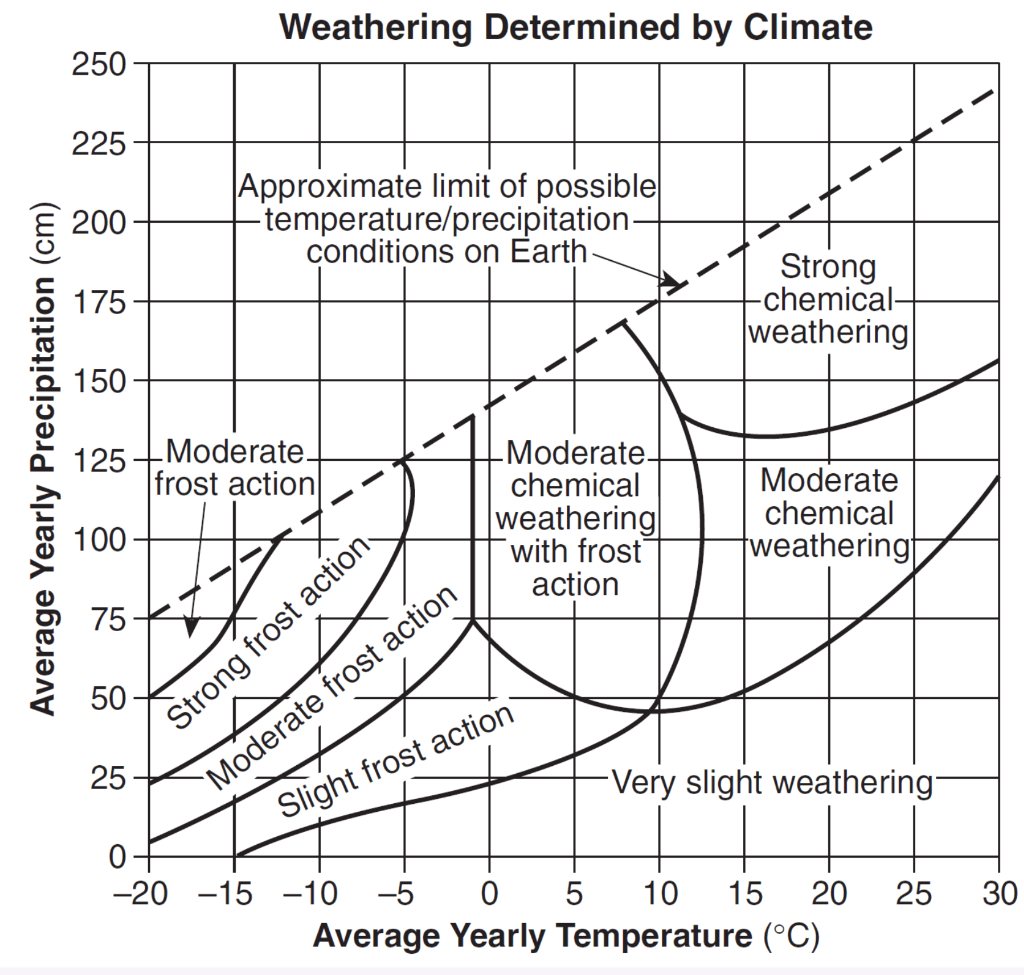
Moderate Frost Action
Explain why the dates are more difficult to read on tombstone A than on tombstone B.

Tombstone A is composed of minerals less resistant to weathering than tombstone B.
A rock has a diameter of 2.0 cm. Determine the minimum stream velocity needed to transport the rock to a new location.
Include Units!
70.0 cm/s to 110.0 cm/s
Explain how the shape of a valley eroded by a glacier differs from that of a valley eroded by a river.
Glaciers create U-shaped valleys.
Rivers create V-shaped valleys.
Describe one action that could be taken to slow down or prevent the future erosion of the land between the escarpment and the ocean.
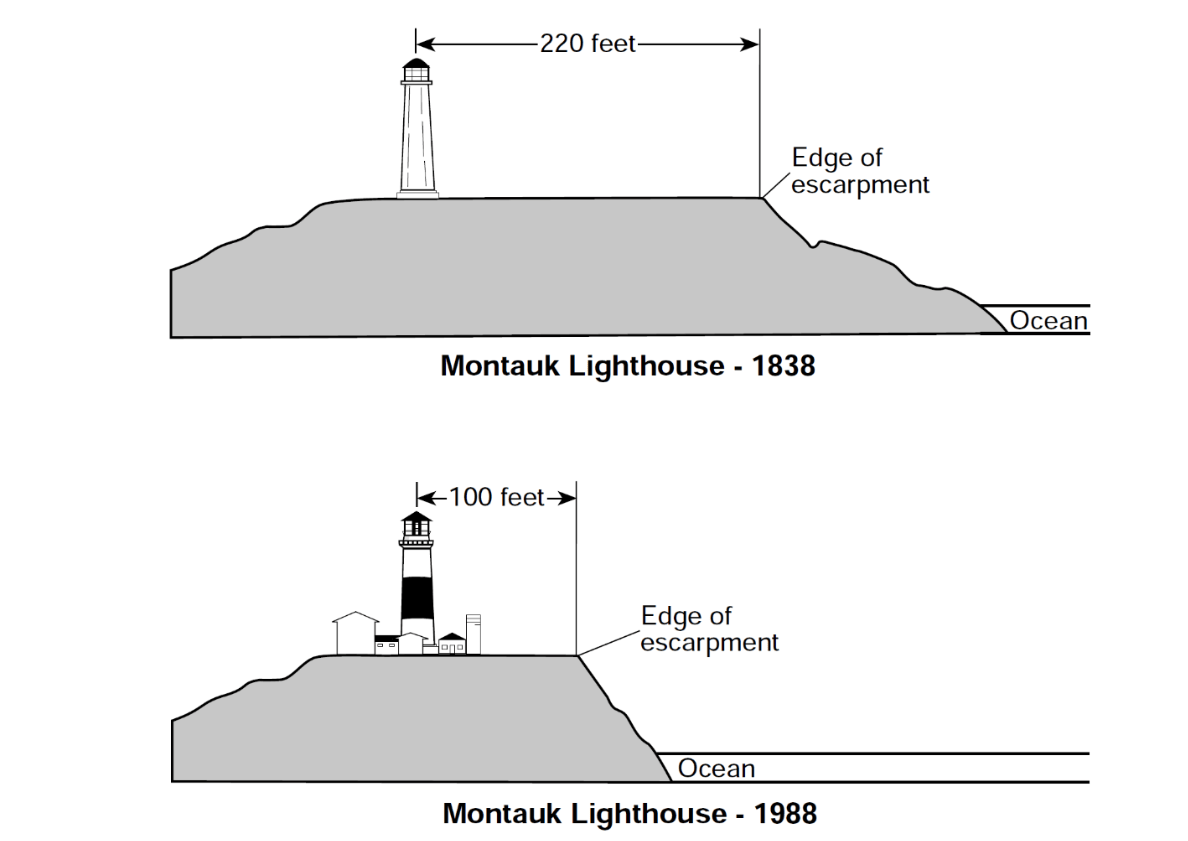
Answers could include but are not limited to:
Add large boulders along the shoreline around the lighthouse.
Build barriers to stop waves from affecting the coastal areas.
Plant more trees and vegetation to hold the soil in place.
Build a seawall or jetty.
Name and describe a weathering process typical in a hot, dry environment.
Abrasion - Wind-driven rocks collide with other sediments.
Exfoliation - Expansion and contraction of rocks breaking their layers apart.
Explain how pollution in a local area can affect the rate of chemical weathering.
Draw a cross-sectional view of the general shape of the stream bottom between points A and B.

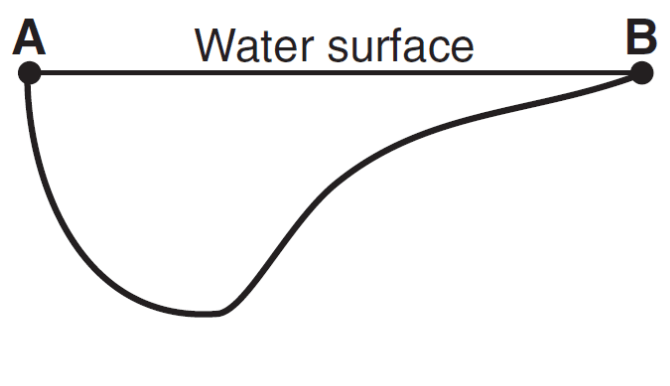
Explain how the effect of global warming on present-day continental glaciers could affect New York City and Long Island.
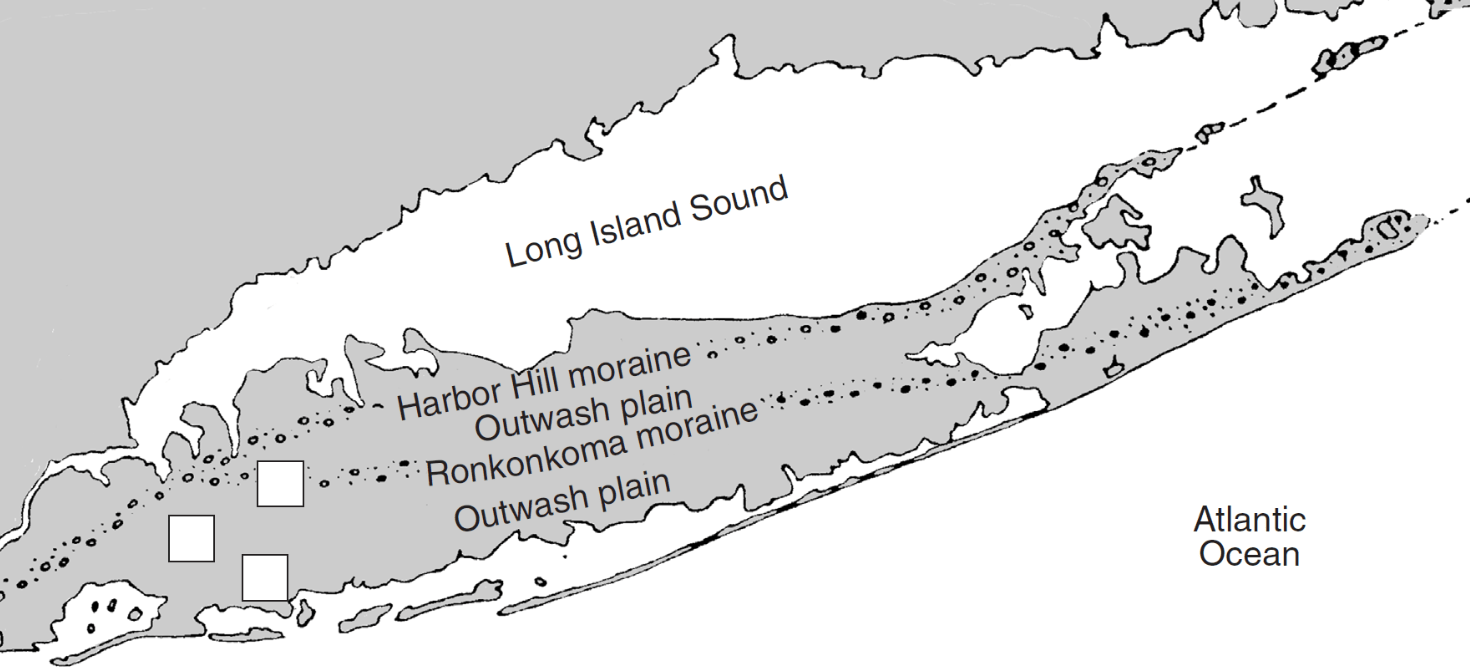
If global warming continues and the glaciers melt, there will be an increase in sea level that will flood most of Long Island and NYC.
Describe the arrangement of the sediments deposited where the river enters the ocean.
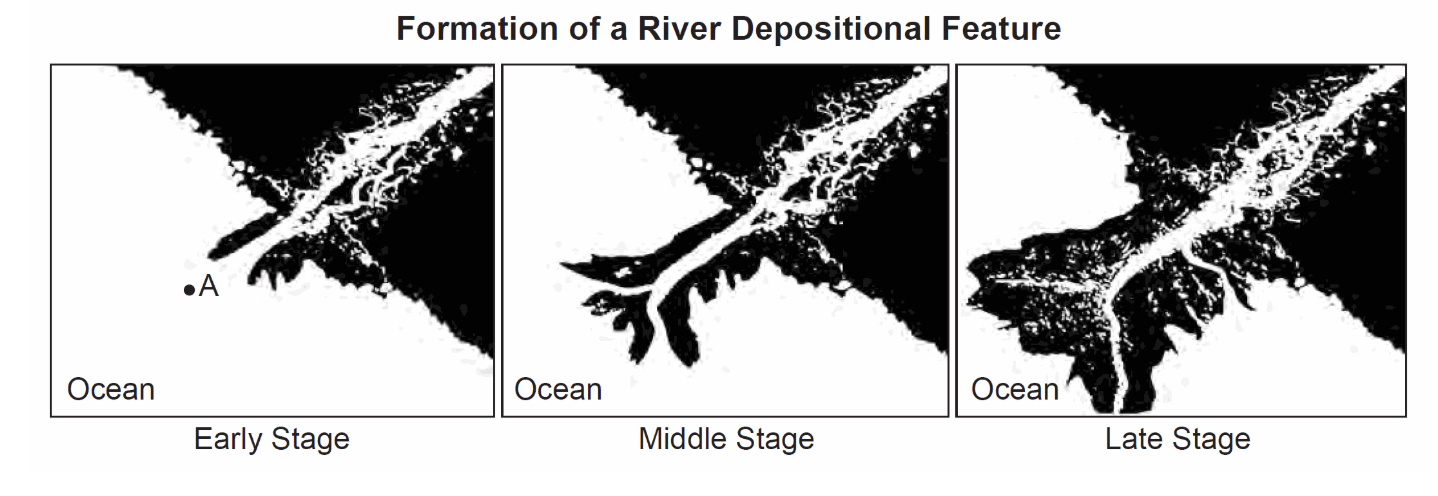
Horizontal sorting/biggest to smallest — boulders, pebbles, sand, silt, clay/decreasing order of sizes.